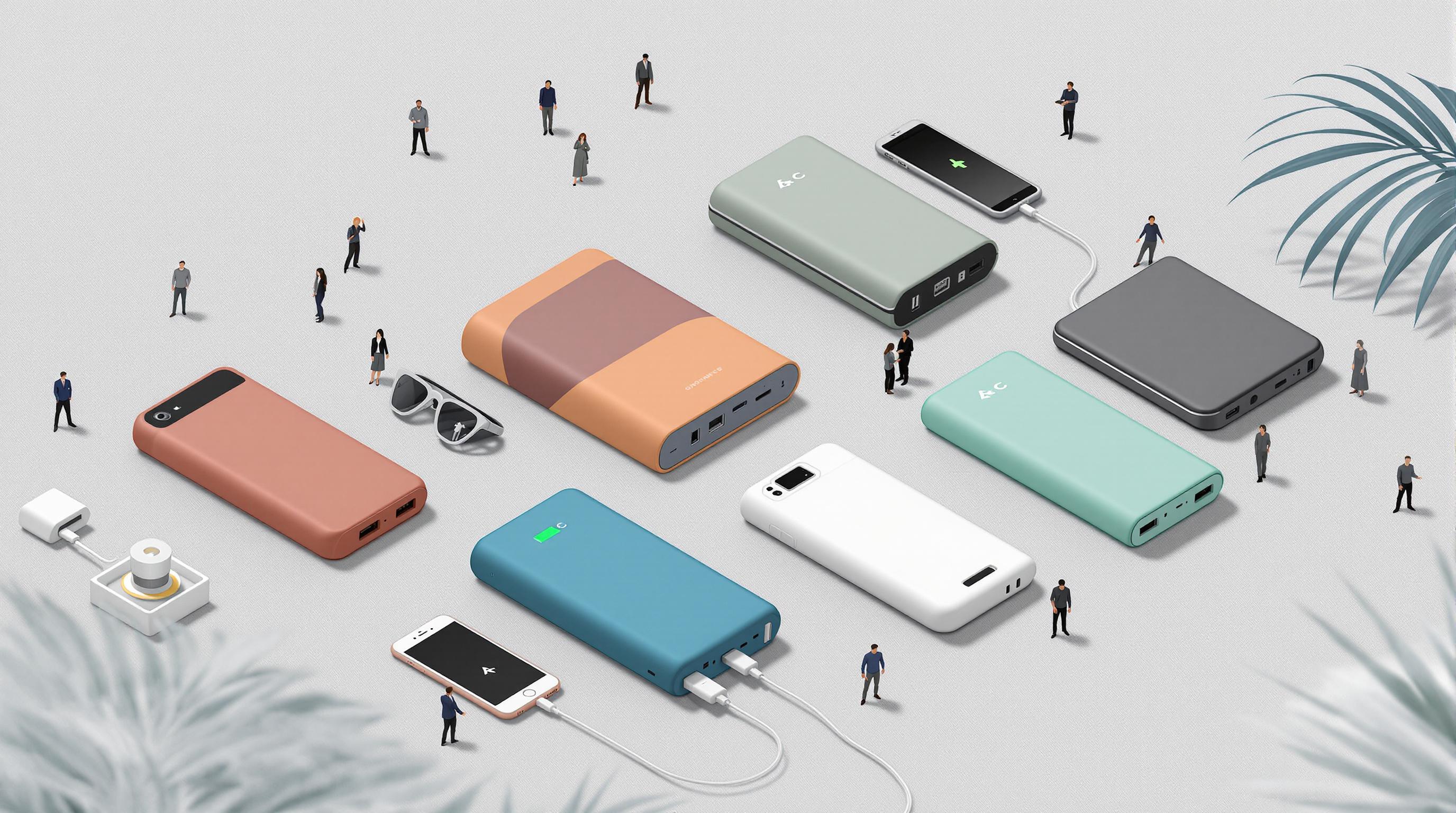Feeling drained after the holidays? A tech detox can help you reclaim focus, improve sleep, and reduce stress. This guide breaks down the best tools and strategies for managing screen time, organizing your digital life, and protecting your privacy in 2025.
Key Highlights:
- Monitor Screen Time: Use built-in tools like Screen Time (iOS) or Digital Wellbeing (Android) or advanced apps like RescueTime.
- Minimalist Devices: Light Phone 3 and Mudita Pure help cut distractions with basic features.
- Focus Apps: Forest and Serene keep you productive while limiting unnecessary screen use.
- Wearables: Fitbit and Apple Watch encourage movement and mindfulness.
- Privacy Tools: Signal and ProtonMail offer secure communication while protecting your data.
Quick Comparison:
| Category | Best Options | Key Features |
|---|---|---|
| Screen Time Apps | RescueTime, Screen Time, Digital Wellbeing | Usage tracking, app blocking, detailed reports |
| Minimalist Phones | Light Phone 3, Mudita Pure | Basic functions, distraction-free design |
| Focus Apps | Forest, Serene | Productivity tracking, app blocking |
| Wearables | Fitbit, Apple Watch | Movement alerts, mindfulness tools |
| Privacy Tools | Signal, ProtonMail | End-to-end encryption, minimal data collection |
Start small: create tech-free zones, set screen time limits, and use these tools to build healthier habits. Ready to take control of your digital life? Let’s dive in!
Understanding Digital Detox: Key Concepts and Tips
What is a Digital Detox?
A digital detox is all about stepping back from technology to refresh your mind and body. It means intentionally taking breaks from notifications, emails, and social media to improve your overall well-being. Studies have shown that too much screen time can affect your stress levels, sleep, and focus [1].
How to Start Your Digital Detox
Building habits that fit your daily life is key. Here are some practical ideas to get started:
- Create Tech-Free Zones: Designate certain areas in your home as screen-free, like the bedroom or dining room. These spaces can help you disconnect and relax.
- Set Clear Time Boundaries: Establish specific times to unplug. For example, a "no screens after 9 PM" rule can improve your sleep and reduce stress [1].
- Replace Screen Time with Meaningful Activities: Fill your free time with offline hobbies. Experts suggest activities like reading a physical book, practicing mindfulness, or exploring hobbies like painting or gardening can help curb the urge to check your devices [2].
- Use Technology Mindfully: Tech can still be helpful if used wisely. Apps like Calm or Headspace offer guided meditations and breathing exercises, which can complement your detox efforts [3]. Just make sure you're using them intentionally and not letting them become another source of screen time.
“Regular detoxing improves sleep, reduces stress, and boosts mental health.”
A digital detox isn’t one-size-fits-all. Find a routine that works for you and helps you balance your tech use with meaningful offline connections. Once you’ve got the basics down, the right tools and apps can help you stick to these habits and make your digital life more manageable.
Digital Detox Apps Review: A Comprehensive Guide to Screen Time Management Tools
Best Apps and Tools for Monitoring and Reducing Screen Time
If you're looking to cut back on screen time and build healthier tech habits, these apps and tools can guide you toward a more balanced digital life.
Smartphone Usage Trackers to Monitor Habits
Built-in options like Screen Time for iOS and Digital Wellbeing for Android offer basic features like tracking app usage and setting limits. For more detailed insights, RescueTime provides in-depth productivity analytics, helping you understand where your time goes and how to adjust your habits. These tools let you see how much time you spend on different types of apps, giving you the data you need to make smarter choices about your screen time.
Minimalist Phones for Staying Present
Devices like the Light Phone and Mudita Pure are designed to help you step back from constant notifications and distractions. The Light Phone 3, priced at $799 (or $399 with early pre-orders), focuses on essentials like calls and texts. The Mudita Pure, costing $369.99, offers a similar distraction-free experience with an e-ink display that's easier on the eyes.
These phones are perfect for those who want to stay connected without feeling overwhelmed by unnecessary features.
Apps That Boost Focus and Productivity
Forest uses a fun approach to help you stay focused by letting you grow virtual trees while you avoid your phone. Meanwhile, Serene blocks distracting apps and websites during work sessions. For example, consistent use of Forest for 30 days has been shown to help users cut down their screen time by an average of 2 hours per day [1].
| App Feature Comparison | Screen Time (iOS) | Digital Wellbeing (Android) | RescueTime |
|---|---|---|---|
| Usage Reports | ✓ | ✓ | ✓ |
| App Blocking | ✓ | ✓ | ✓ |
| Analytics Depth | Basic | Basic | Detailed |
To get the most out of these tools, start with clear goals. For instance, limit social media to 30 minutes a day or schedule specific times to check your phone. These apps and devices aren't about cutting out technology entirely - they're about using it in a way that works for you.
For an even more effective digital detox, consider pairing these tools with wearables or organization-focused gadgets. They can help you take your screen time reduction to the next level.
sbb-itb-fba1923
Wearables and Devices for a Healthier Digital Life
Wearables and organization tools can help you manage your tech use and reduce digital fatigue. These devices provide practical ways to tackle screen stress while staying in control of your habits.
Wearables That Help You Take Breaks
Smartwatches and fitness trackers now go beyond step counting - they promote healthier tech habits. Fitbit's "Reminders to Move" feature nudges users to take at least 250 steps every hour, breaking up long periods of screen use.
The Apple Watch Series 9 takes it a step further by pairing movement alerts with guided breathing exercises. These features encourage mindfulness and help minimize the strain of sitting at a screen for too long.
For kids, the Gabb Watch stands out with its parental controls, limited screen options, and educational tools. It's designed to encourage positive tech habits early on.
| Wearable Feature Comparison | Movement Alerts | Mindfulness Tools | Screen Time Management |
|---|---|---|---|
| Fitbit Sense 2 | Hourly step reminders | Breathing exercises | Basic tracking |
| Apple Watch Series 9 | Stand reminders | Meditation app | Detailed usage reports |
| Gabb Watch | Activity tracking | Educational features | Parental controls |
Tools to Organize Your Digital Life
Organizational gadgets can turn digital chaos into a manageable system. LastPass Premium ($36/year) simplifies password management, so you don’t have to remember multiple passwords.
For organizing notes and documents, Evernote Professional ($99.99/year) offers a secure, searchable space to keep everything in one place, saving you time and effort.
"Turn off notifications or set wearables to 'do not disturb' during focus times."
While these tools help manage your screen habits and digital clutter, it’s crucial to ensure your personal data stays secure.
Privacy and Data Safety While Detoxing
With 71% of Americans concerned about how companies handle their data, protecting personal information is a top priority - especially when using digital detox tools.
How to Check Data Privacy in Apps
Before downloading any detox app, make sure it has strong encryption, clear privacy policies, and collects as little data as possible. Features to look for include:
- End-to-end encryption to keep your information secure.
- Transparent privacy policies that explain how data is handled.
- Minimal data collection, ensuring only essential information is gathered.
- User controls, so you can manage your data effectively.
Apps that comply with GDPR often meet higher privacy standards. Beyond this, enable two-factor authentication and restrict app permissions to only what's necessary. Companies with transparent data protection policies gain the trust of 64% of users [1].
Privacy-Focused Apps to Use
Some apps stand out for their focus on privacy. Signal provides secure messaging with end-to-end encryption, while ProtonMail offers encrypted email without storing personal data. Always opt for apps that limit data collection, have clear privacy settings, and release regular security updates.
"Privacy means control over what you share - Edward Snowden."
When using privacy-focused detox tools, take these extra precautions:
- Connect only to secure networks.
- Avoid public Wi-Fi for sensitive activities.
- Perform regular privacy checks on your apps.
- Keep all your apps up to date to protect against vulnerabilities.
Conclusion: A Balanced Digital Life in 2025
Key Points to Keep in Mind
Finding digital balance in 2025 doesn't mean cutting yourself off from technology completely. Instead, it’s about building thoughtful habits that support your well-being and keep you productive. Tools designed for digital wellness can help you track and adjust your tech use, enabling smarter choices about screen time.
Here are some practical strategies to consider:
- Set up tech-free zones or specific times during your day.
- Choose apps that prioritize privacy and offer strong encryption.
- Regularly track your habits to improve focus and overall well-being.
A Simple Plan for Digital Wellness
Achieving balance with technology is a personal process. To make this easier, follow this straightforward guide for weaving digital wellness into your daily routine:
| Time Period | Suggested Actions |
|---|---|
| Personal Time | Start with offline activities; end with a tech-free wind-down. |
| Work Hours | Use productivity apps and schedule regular breaks. |
| Weekly Reset | Dedicate one day each week to being tech-free. |
Technology should work for you, not the other way around. While using minimalist devices can help, the real key lies in building habits that last. By sticking to these strategies and tweaking them as needed, you can create a healthier, more intentional relationship with technology.
"The goal isn't to abandon technology but to use it in a way that supports our well-being and productivity while maintaining our privacy and mental health." [1]
The journey to better digital habits starts with small, steady steps. Focus on making progress rather than striving for perfection, and choose the tools and routines that fit your life best. 2025 can be the year you redefine your connection with technology.
FAQs
Here are quick answers to some common questions about digital detox to help you get started.
What apps help limit screen time for adults?
RescueTime is a great option. It tracks your digital habits, lets you set usage limits, offers focus sessions, and provides detailed reports to help you manage screen time.
What phones work best for a digital detox?
Devices like the Light Phone 2 and Mudita Pure focus on basic functions, such as calls and texts, making them perfect for cutting down on unnecessary screen time.
How can I track the success of my digital detox?
You can measure your progress by monitoring screen time, productivity, sleep quality, and time spent on in-person interactions. Apps like FamiSafe or built-in trackers on your devices can help.
| Metric | How to Measure |
|---|---|
| Screen Time | Use built-in trackers or apps like FamiSafe |
| Sleep Quality | Monitor rest patterns with wellness apps |
| Productivity | Track task completion and focus sessions |
| Social Interaction | Log time spent in face-to-face activities |
Are there privacy-focused apps for digital detox?
Yes, apps like Signal for secure messaging and Brave for private browsing prioritize your privacy with features like end-to-end encryption and minimal data tracking.
"The goal isn't to abandon technology but to use it in a way that supports our well-being and productivity while maintaining our privacy and mental health." [1]
How can I create tech-free zones at home?
Set up areas like the dining room or bedroom where devices aren’t allowed. Keep gadgets out of sight using storage solutions to reduce temptation.
These tips and tools can guide you toward a healthier relationship with technology.
Related posts
- Air Fryer Buying Guide: 7 Features That Matter Most
- The 7 Best Fitness Trackers for Achieving Your 2025 New Year’s Health Goals
- Top 5 High-Performance Laptops to Boost Your Work-From-Home Productivity in Early 2025
- Best Valentine’s Day Gifts for Every Budget: Thoughtful Tech and Lifestyle Picks for 2025


